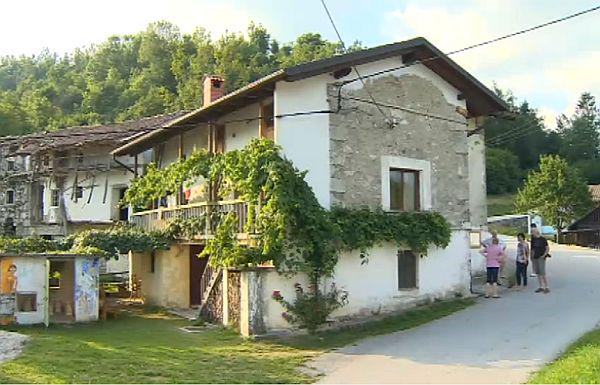
The museum is set in a more than 200 years old house, and it is designed in the manner of cabinets of wonders, predecessors to museums of today.
The house hosting the Last Museum of Contemporary Arts belonged to the grandmother of the sculptor Damijan Kracina. Until recently the house was the sculptors’ sanctuary for his artistic work and the place to escape to from Ljubljana. Now the house became a gallery where works of his friends are exhibited, and some of major works from his artistic opus created during twenty years, while director's films are being projected to the facade of the neighbour's house.
At the outskirts of state and art
The name – the Last Museum of Contemporary Art – was chosen for several reasons. The first was the fact that it stands in the vicinity of Robidišče, the village which is located at the westernmost point of Slovenia. But it is also the last place where the previously exhibited creations of the sculptor are perhaps being displayed for the last time. And one of the reasons is also the fact that he is re-examining the periphery of contemporary art.
"We are on the periphery, also for setting the museum in a garage, a mosquito under the ceiling, a large muddiger into a corner," explained Klavdija Figelj, curator of the project.
Exiting the closed circle of »hallowed« spaces and visitors
The very unusual layout is also the consequence of the artist's interest in exhibiting outside galleries.
"It often happens that we artists and curators are our only audience; it always makes me a bit sad. A lot of people who pass by have the first contact with the objects which are otherwise placed only within the hallowed gallery spaces," Kracina explained.
The addition to the Museum is a sales gallery managed by Katarina Toman Kracina, and a kitchen where after a number of projections, also outside our borders, marmalade has found its sanctuary at grandmothers’ hearth.
Kracina presented his grandmother Zalka in one of the films sticking tiles to the kitchen range with marmalade. "Being a practical woman she used marmalade which was the easiest accessible material for sticking tiles," the artist explained.
N. Ar., Sabrina Lever; translated by G. K.

































































